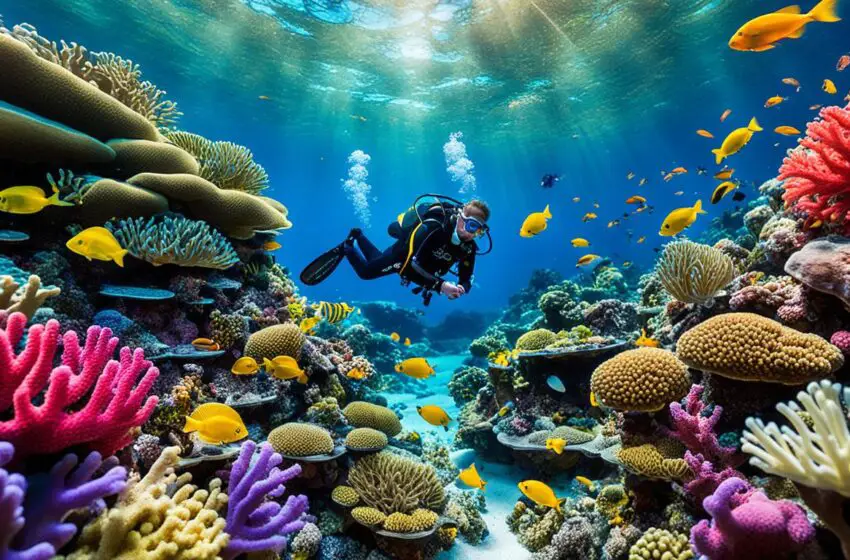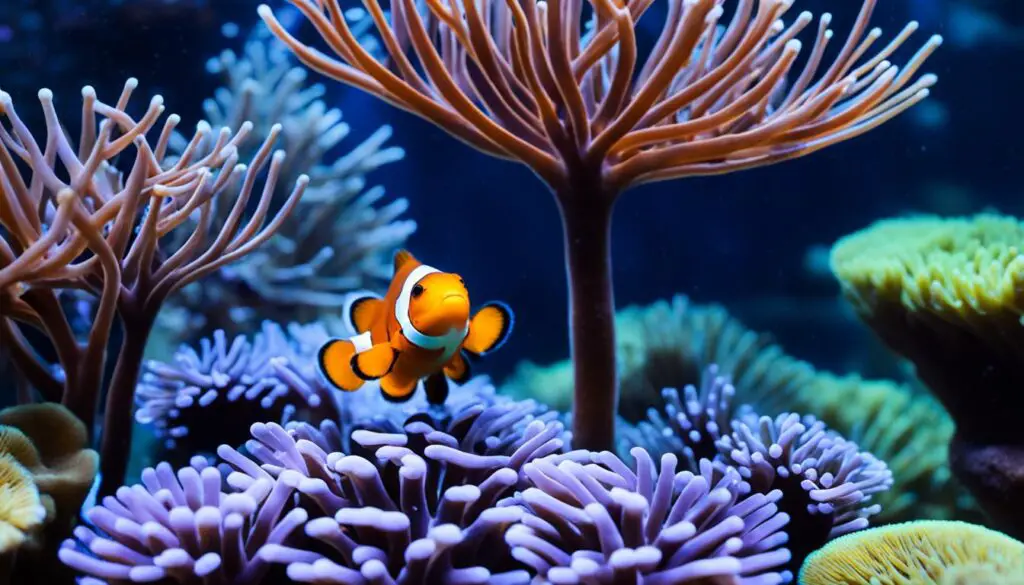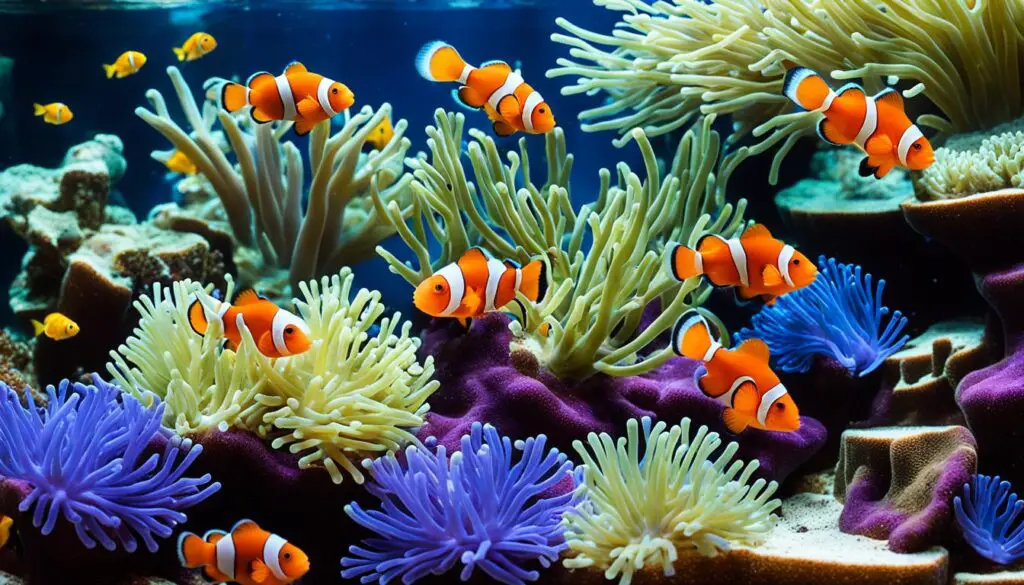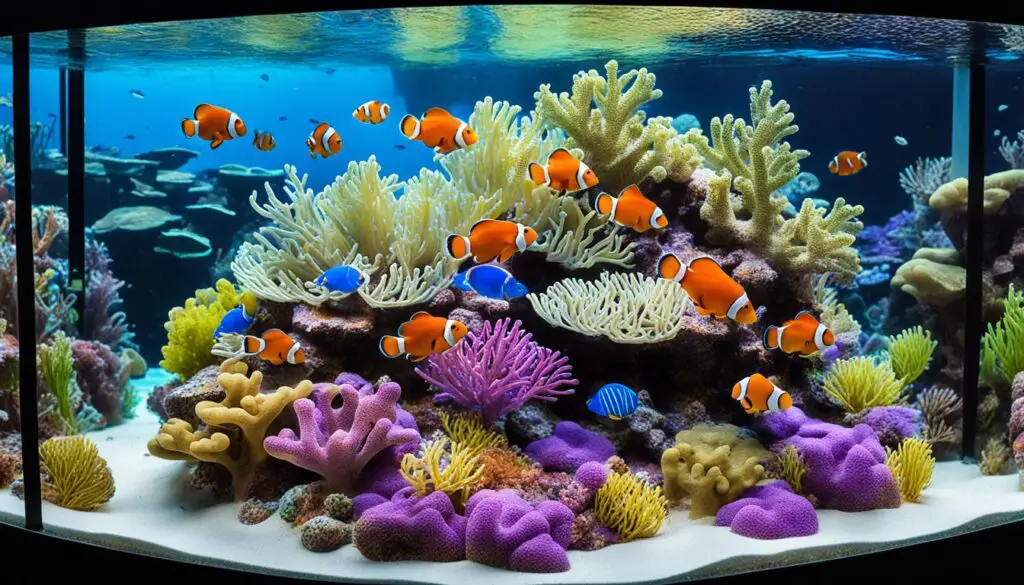Coral Reef Rehabilitation: Reviving the Reef: Innovative Coral Reef Rehabilitation Techniques!

The decline of coral reefs is worrying, leading to an urgent need for restoration. These ecosystems are known for their beauty and vital role in the environment. Yet, they face serious threats to their survival. To save them, a broad approach to rehabilitation is necessary.
The NOAA Coral Reef Conservation Program is at the forefront of these efforts. They use new methods to save and grow coral reefs. Their work focuses on making better homes for corals, stopping their decline, and making them stronger. This approach is key to bringing these valuable ecosystems back to life.
Growing corals in nurseries and later planting them on reefs is a crucial practice. This method aims to increase the number of corals and make them stronger. Innovations like microfragmentation can speed up the growth of corals. This helps them withstand the challenges they face.
It’s important to understand the big benefits of restoring coral reefs. They help the economy by supporting tourism, fishing, and protecting coasts from storms. These sites are also homes to many sea animals. They serve as natural barriers against coast harm and storm surges.
By using advanced methods for coral reef recovery, we protect the ocean’s future. We also ensure economic growth and help the people living by the coast. Let’s work together to bring coral reefs back to life. This will secure their existence for the generations ahead.
The Importance of Coral Reef Restoration
Coral reefs are stunning marine habitats and key players in our world’s economy. They help out big time, in places like tourism, fishing, and making medicines. The tourism sector itself brings in huge bucks every year. It draws millions of people to see the amazing coral reefs up close. These visitors also help local economies, by creating jobs and supporting many families.
These reefs do more than just look pretty. They also protect our shores from erosion and storms. Their intricate formations act as a shield, breaking waves and stopping the loss of land. This protection is especially vital for places near the ocean, keeping their homes, businesses, and ports safe.
Coral reefs are key in keeping our oceans full of life and diverse. They act as homes and safe spaces for a wide range of fish, crustaceans, and other sea creatures. This supports the food chain, keeping the ocean healthy and productive.
Closing text.
Yet, reefs worldwide are in deep trouble. Things like global warming, too-warm oceans, and more acidic waters are hurting them. Pollution from human activities and harmful fishing practices aren’t helping either. These threats are leading to the decline of coral reefs.
This loss affects the environment and communities that depend on the reefs. Animals and plants that rely on coral for everything could suffer. People living near coral reefs might lose their jobs and struggle to find food.
So, restoring coral reefs is critical. It helps reefs fight climate change and keep their rich diversity. Coral reef restoration means activities like planting baby corals back onto the reefs or even creating corals that can withstand warmer waters. These efforts aim to revive coral reefs, preserving their importance for the future.
Next, we’ll look at some new and exciting methods used in coral reef restoration.
Innovative Techniques in Coral Reef Rehabilitation
Traditional ways to restore coral reefs are good but face big hurdles in getting big and affordable. That is why new methods are under works. They aim to tackle these challenges head-on to have a greater effect on saving our coral reefs.
Coral gardening is one of these new techniques. It means growing corals in special places before moving them to the reefs. This way, we can better watch their growth. It ensures they survive and become part of the reef smoothly. Coral gardening is now a common method to help restore coral reefs.
Now, there are coral nurseries on land, part of the coral gardening effort. These nurseries offer the perfect settings for corals to flourish. They help corals grow faster and stronger. This method increases the chance of a successful reef merger and cuts the costs of the traditional ways.
Microfragmentation is a new, promising way to grow corals faster. It works by slicing big corals into tiny pieces, which grow back into new colonies. This not only speeds up the recovery of damaged areas but also makes the coral population more resistant and diverse.
Assisted evolution is another new path in coral rehabilitation. It works on making corals more resistant to climate change. This is done by picking and breeding corals that can handle higher ocean temperatures. It has great promise in helping coral reefs survive in the long run.
Adaptive management is vital in making our coral restoration efforts better. It means we continuously learn from our actions and improve our methods. This way, we make sure we use the best techniques, learn how to keep the reefs healthy in the long term.
With coral gardening, microfragmentation, assisted evolution, and adaptive management, we are well-equipped to save our coral reefs. By putting these advanced methods into action, we can secure the future of coral reefs. This way, they can be enjoyed by the generations to come.
Conclusion
Coral reef restoration is vital for bringing back and safeguarding these crucial ecosystems. Techniques like coral gardening and microfragmentation are making real progress. They help corals grow better, get stronger, and scale up restoration.
But there’s still much to do. We need to improve how we do research and work together. This will make repairing coral reefs more effective and affordable. We must use methods that work well and can reach more areas.
We all can play a part in saving coral reefs. Let’s keep working on coral reef restoration, saving these important ecosystems. With everyone helping, we can ensure a better tomorrow for coral reefs. And this will help all the life and people that rely on them.
FAQ
What is coral reef rehabilitation?
It’s the process of fixing damaged coral reefs. Various methods and strategies are used to bring them back to life.
Why is coral reef rehabilitation important?
It’s key to saving the money, environment, and culture coral reefs provide. It also helps protect many species and support the lives of millions.
What are some innovative techniques used in coral reef rehabilitation?
Techniques like coral gardening, microfragmentation, and assisted evolution help a lot. They make the reefs grow better, stronger, and bigger.
What is coral gardening?
Coral gardening means growing new corals first, then planting them on damaged areas. It speeds up growth and saves money.
What is microfragmentation?
It’s when experts cut big pieces of coral into smaller parts. This helps the coral grow faster and become more resilient.
What is assisted evolution?
Assisted evolution aims to make corals better at handling climate change. It does this by selectively breeding corals that can tolerate high temperatures.
Why is adaptive management important in coral reef rehabilitation?
Adaptive management helps make reef repair effective. It involves watching and learning, so efforts to restore the reef can be tweaked for better results.
How can coral reef restoration be scalable and effective?
To make coral reef restoration work on a big scale and really well, we need new ideas. We must also keep on learning through research. Plus, different groups must work together on this.



